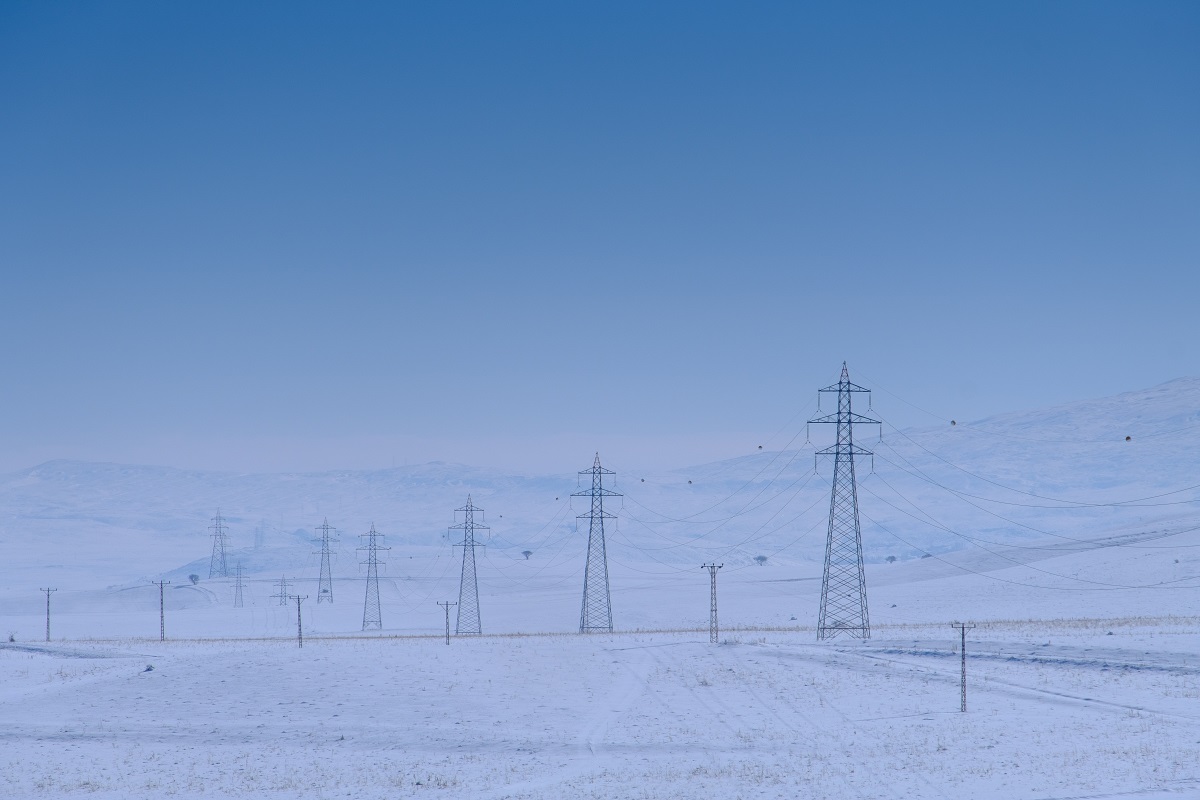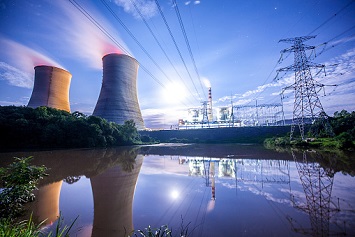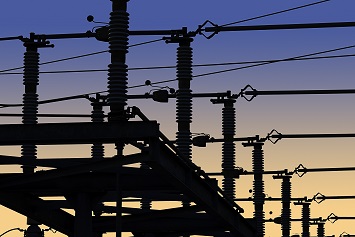It was a perfect storm of extreme winter weather, bad timing, system failures, and poor planning that caused what has already been characterized as the greatest forced power blackout in U.S. history.
Two back-to-back frigid winter storms swept across Texas—one from February 10–11 and the second from February 13–17, 2021—during which recorded temperatures reached record-setting lows. At the peak of one of the storms, the Dallas-Fort Worth airport reported a temperature at -2 °F, the coldest on record in north Texas in 72 years, according to The Dallas Morning News.
And, yes, northern states see much colder temperatures for more extended periods of time. But Texas homes, from the insulation to the plumbing, are not built to withstand such frigidity, and many are all electric and without fireplaces.
As it turns out, the Lone Star State’s electric grid is also not built for extreme cold.
The frigid weather event saw 4.4 million people without power at one point and caused many to lose water. In addition, cell phone signals were lost in some rural areas. The storms are connected to the deaths of at least 36 Texans, with the death count continuing to rise.
There is a lot of finger-pointing going on in the Lone Star State, with most of it pointing at the Electric Reliability Council of Texas (ERCOT), which is responsible for managing the flow of electricity to Texas consumers.
Others pointed at the frozen wind turbines that weren’t properly winterized. Some blamed the fossil fuel industry, and others said Texas’s unique deregulated power market had allowed for poor maintenance and a lack of upgrades. A few pointed at climate change.
What Happened?
A combination of several factors went wrong at once.
“Unprecedented winter storms and frigid temperatures hit across the state beginning on Sunday, causing more than 30 gigawatts [GW] of generation capacity to be taken off-line,” according to Texas A&M Today. “On the demand side, due to this cold weather, the electric load hit a record of more than 69GW on that night. In response to this combination of historically high demand and unprecedented shortage of power supply, ERCOT initiated ‘Energy Emergency Alert 3’ which ordered transmission companies to begin rotating outages across the state. Meanwhile, skyrocketing demand for natural gas to heat homes in the frigid conditions meant the already stretched supply of gas available for electricity generation was even further compromised.”
“Power plants weren’t fully weatherized, wiping out generation capacity,” according to Financial Post. “The ones that were still standing struggled to get enough fuel, with shale wells experiencing so-called freeze-offs. Many wind turbines stopped spinning. Texas, with a grid notoriously isolated from the rest of the U.S., was unable to call on neighboring states for help.”
A week before the storm, ERCOT’s projections showed it would not have enough of a supply to meet the demand caused by the extreme cold temperatures.
One large power generator, Vistra Corp., had 4,000 megawatts offline for maintenance that could have been ordered back online ahead of the winter storm. It is unclear if ERCOT ordered Vistra’s generators back online or if Vistra just refused the request, as neither company responded to Financial Post’srequests for comment at the time of press.
On Tuesday, February 16, 2021, Dan Woodfin, a senior director at ERCOT, said the main problem was frozen instruments at coal, nuclear, and natural gas plants.
“ERCOT’s authority is somewhat limited. In 2011, the last time freezing weather caused rolling outages, it released best practices for power generators to follow, but it couldn’t require anything, said Adrian Shelley, Texas office director of Public Citizen, an advocacy group,” according to Financial Post.
One of the details that has caused outrage is that these problems were previously made known. A 2011 report by the “Federal Energy Regulatory Commission and the North American Electric Reliability Corporation concluded, among other things, that power companies and natural gas producers hadn’t properly readied their facilities for cold weather, including failing to install extra insulation, wind breaks and heaters,” according to The Texas Tribune.
“Another federal report released three years later made similar recommendations with few results,” reported The Texas Tribune. “Lawmakers also failed to pass measures over the past two decades that would have required the operator of the state’s main power grid to ensure adequate reserves to shield against blackouts, provided better representation for residential and small commercial consumers on the board that oversees that agency and allowed the state’s top emergency-planning agency to make sure power plants were adequately ‘hardened’ against disaster.”
The Texas Public Utility Commission (PUC), which oversees the state’s electric and water utilities, previously concluded in 2012 that power-generating plants often failed to recognize “critical failure points” such as instrumentation in extreme weather events.
Although ERCOT announced it would respond to the high-demand/low-supply problem by creating rolling blackouts, many across the state were without power and water for more than 4 days. In some areas, the water supply could not be produced due to the power failure.
“About 60% of the energy sources offline in Texas on Wednesday and Thursday were thermal — that is, power plants that run on coal, natural gas, or nuclear energy — while the rest was from solar and wind farms, ERCOT said,” according to Business Insider.
It is difficult to pump natural gas from the ground when the temperature falls below freezing, and utility companies prioritized sending natural gas to residences instead of to power-generating companies.
The Texas Grid
There are three major grids across the United States. Texas has one of those grids. The rest of the country has interconnected regional grids. “Texas’s ERCOT grid essentially stands on its own,” according to Texas A&M Today. “This limits power import and export during extreme situations. When states like Minnesota or California have extreme weather conditions, they can draw upon inter-state power transmission lines to get power from the interconnection. The Texas grid is largely an isolated grid from the eastern and western interconnections that serve the rest of the country.”
Other parts of the country employ long-term planning processes—something that is lacking in Texas, according to Financial Post.
“In the east, grid operators run capacity markets that act like insurance policies. Generators are paid to guarantee that their supplies will be available on the most extreme hot and cold days. If they don’t show up, they face stiff penalties. Texas has instead left it up to prevailing prices and industry.
“That deregulated and competitive nature of the markets stands to exacerbate massive price run-ups. More than 100 electric suppliers compete for customers who churn power companies like credit cards. They take big risks to attract new customers, offering incredibly low rates and allowing unlimited power use on weekends. But when the wholesale markets backfire, they bail on them.
“The state also refuses to connect its grid with neighbors in part out of fear that the system will fall under federal oversight and regulation. But its politicians are coming to realize that independence has a downside,” Financial Post adds.
That downside was felt by more than 4 million customers because ERCOT could not borrow from any neighboring grids in its time of crisis.
Climate Change Connection
Many people associate climate change with extreme heat, but scientists say that is not always the case.
“A freak snowstorm may not seem like a harbinger of global warming, but a growing body of research links climate change with the occurrence of the so-called polar vortex,” according to TIME. “Scientists say warming in the Arctic, where temperatures are rising faster than anywhere else on the planet, may be weakening the jet stream that typically keeps cold air deep in the northern hemisphere. A weakened jet stream allows freezing air to drift down to lower latitudes.”
Scientists were not surprised by the recent freak winter storm in Texas. Climate scientists have spent decades cautioning the world “that a warming planet would cause climate chaos, raising the average global temperature while driving unusual weather events like this one,” says TIME.
For Texas, it was not a question of “if” but of “when.”
“The cascade of failures in Texas signals what is perhaps the greatest challenge ahead in this climate-changed world: accepting that business as usual isn’t working,” TIME notes. “Across the planet, humans have built civilization to withstand the vagaries of a 20th century climate. The extreme weather events of the 21st century will look nothing like those that came before—and hundreds of years of past preparation will not suffice. ‘The future is not going to be like the past,’ says Melissa Finucane, a co-director of the Rand Climate Resilience Center. ‘If we could just plan a little better, we could anticipate some of these problems.’”
According to the National Oceanic and Atmospheric Administration (NOAA), in 2020, there were 22 weather events in the United States that cost more than $1 billion each. This number of events made the previous record of 16 such costly events in a year in 2011 and 2017 seem mild.
Preparing Solutions
Strong, durable systems should be top of mind for all decision-makers, advises Texas A&M Today. The article recommends:
- Winterizing wind turbines and other generating infrastructure for extreme conditions.
- Investing in additional high-voltage direct-current (DC) lines to connect ERCOT with both neighboring eastern and western power grids to allow Texas to draw upon imports/exports when the supply of electricity becomes volatile.
- Scaling up implementation of demand response by regulatory entities and market designs. The necessary technologies, including smart meters on most of the houses, are already there. What is missing is the proper market mechanics, such as proper crediting of demand contribution and the political will to promote wide adoption.
- Creating strategic energy storage reserves. Electric energy storage would have minimized hardship for millions of Texans. Much research and innovation will be needed to fully develop the potential of energy storage at grid scale.
Storms such as Texas’s 2021 winter weather event are a warning for the United States, and Texas in particular, to better prepare for an increasingly unpredictable Mother Nature.
Perhaps this event will push Texans away from their historic position of being dead set against the rate hikes that will accompany upgrades to the state’s grid.
Meanwhile, the Finger-Pointing Continues
“State officials are again promising reforms,” according to The Texas Tribune. “Lawmakers have called on officials with the PUC and [ERCOT] … to testify at hearings…. [Texas Governor] Greg Abbott has called on lawmakers to mandate the winterization of generators and power plants, and Texas Attorney General Ken Paxton said he was launching an investigation into ERCOT and almost a dozen power companies, including Luminant (Energy CO LLC). Separately, the PUC announced its own investigation into ERCOT.”



